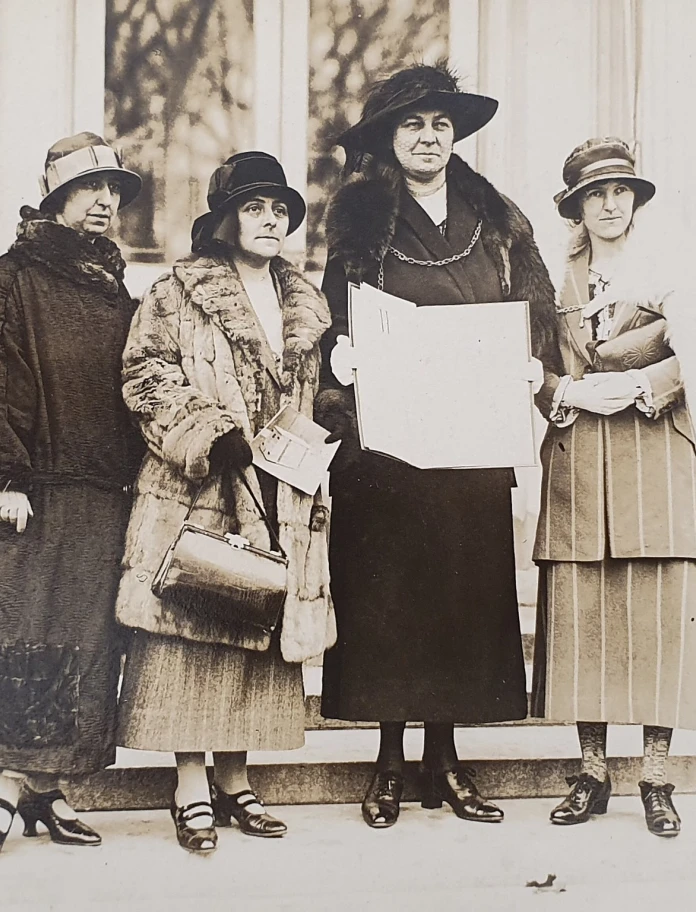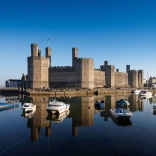Wales’ roots in America run deeper than you may think. Some of the most influential European travellers to America have connections with our small country. Given the population of Wales in the 17th century was around 350,000 people, this is extraordinary stuff – although some think that Wales’ links to America stretch even further back than that.
A globetrotting Welsh prince
If you believe the earliest history books about Wales – Humphrey Llwyd’s Cronica Walliae (1559) and clergyman David Powel’s Historie of Cambria (1584) – a Welsh Prince, Madoc, landed in America in around 1170, approximately 320 years before a certain Christopher Columbus got there. He returned to Wales, legend goes, to take more settlers with him. Though a tale more of folklore than fact, this myth was used during the Elizabethan period to assert Britain’s rights to America over Spain in the late 1500s.
Another strand to the legend suggests his settlers eventually met the Mandan, a Native American tribe, who learned to speak Welsh. A 22-year-old explorer from Caernarfon, John Evans, voyaged to America to find them in the 1790s, but found no evidence of Welsh-speaking when he got there. He did, however, make a very early map of the Missouri river during his journey. Gruff Rhys, of the band Super Furry Animals, made a fantastic album and film about the pioneering explorer, American Interior, in 2014.
Early arrivals
In 1681, King Charles II gave more than 45,000 square miles of America to British Quaker William Penn. Penn wished to call his newly-claimed region “New Wales”, due to the landscape’s resemblance to the UK nation, but Charles II insisted on it instead being called Pennsylvania. Many Welsh Quakers, who only spoke the Welsh language, followed Penn across the Atlantic, fleeing religious persecution back home. The areas of Narberth, Bala Cynwyd and Bryn Mawr in West Philadelphia pay testament to these sturdy Welsh roots.
More immigration in the 18th century brought the Welsh to a West Pennsylvania area now known as Cambria County (Cambria being the Latin name for Wales). Delaware and the Carolinas also have Welsh roots, and – due to an influx of immigrants from West Wales in the 19th century – Gallia County in Ohio was formerly known as “Little Cardiganshire”. Welsh was spoken here widely, and remained the county's most common second language until 1970.
Present-day towns such as Cardiff in Maryland and Swansea in Massachusetts point to further historic Welsh communities spread right across the US.
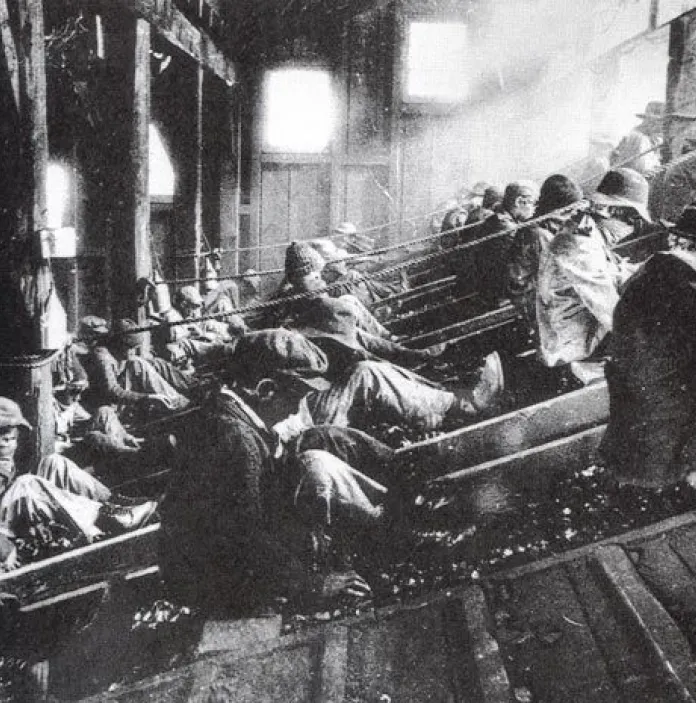
Laying down the law
People of Welsh descent have had a powerful effect on American politics. At least five of the signatories of the 1776 American Declaration of Independence were either Welsh or of recent Welsh descent (though some scholars put this number as high as 18!). They included the Llandaff-born Francis Lewis, who moved to America at 21, signing the constitution on behalf of New York.
At least eight of America’s Presidents are also known to have had Welsh roots. The second, John Adams, and his son John Quincy Adams, the sixth, are from a family that trace back to Llanboidy, Carmarthenshire (John’s great-grandfather was a tenant farmer on the Banc-y-Llain, which is now part of the Jabajak Estate). Third President Thomas Jefferson, could also trace his heritage to Wales, stating, in the opening lines of his autobiography, “the tradition in my father's family was that their ancestor came to this country from Wales, and from near the mountain of Snowdon”. (Snowdon, or Yr Wyddfa in Welsh, is the highest peak in Wales.)
James Madison, James Monroe and William Henry Harrison had Welsh ancestry too, as did Abraham Lincoln, whose great-great-grandfather, John Morris, was a farmer from Ysbyty Ifan near Conwy – visitors can still see the remains of the cottage, Bryngwyn, where he is believed to have lived. Lincoln’s understanding of Welsh informed his 1860 election campaign, when he had 100,000 election pamphlets printed yn Gymraeg (in Welsh).
Contemporary American politicians with Welsh heritage include Barack Obama, who became the first President to visit Wales in 2014, and Hillary Clinton, whose great-grandfather John Jones, a miner from Llangynidr, moved to Pennsylvania in 1879, and her great-grandmother, Mary, was believed to come from Abergavenny. Clinton received an honorary doctorate from Swansea University in 2017, and their College of Law and Criminology was renamed the Hillary Rodham Clinton School of Law.
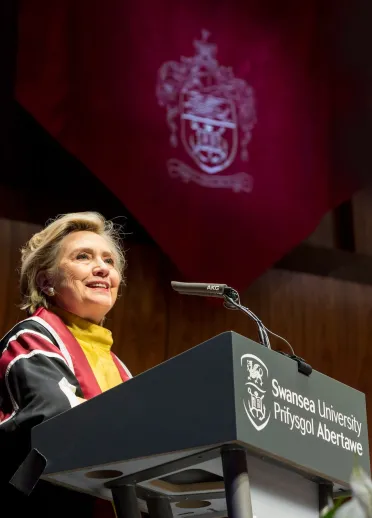
Famous faces
But it’s not just American politicians with family ties to Wales. JP Morgan, who gave his name to the multinational investment bank, Lewis Henry Morgan, one of the earliest defenders of the rights of Native Americans, Quincy Jones, one of the most influential jazz musicians of the 20th century, and Martha Hughes Cannon, the first female US State Senator, all have Welsh ancestry.
The mother of Frank Lloyd Wright, one of the world’s greatest architects, left Wales as a five-year-old in 1844, travelling with her family to America. Her son’s Welsh roots stayed strong: the groundbreaking estate he built for himself in the 1930s is called Taliesin after the Welsh bard. Another venerable structure with Welsh foundations is the women’s liberal arts college Bryn Mawr in Philadelphia, built on land given to Welshman Rowland Ellis by William Penn in the 1680s. Ellis' former farmhouse, also called Bryn Mawr, is still standing near Dolgellau.
Many Hollywood legends have links to Wales too. Peg Entwistle, the actress who threw herself off the Hollywood sign, was born in Port Talbot where her Welsh grandmother lived. The industrial town would produce many more stars, like Anthony Hopkins, who has now been naturalised as an American. Actress Bette Davis also had Welsh family, and hosted a press conference in Cardiff in 1975. She talked about her roots there, and even said goodbye to her guests with a glowing 'nos da' ('good night').
Another connection through the arts comes courtesy of Welsh poet Dylan Thomas, who died in New York in 1953. It is said that the eccentric Welshman inspired the stage name of one of America’s most beloved singers: Bob Dylan.
The women of Wales campaign for peace
The 1923 Welsh Women’s Peace Petition, co-ordinated by the Welsh League of Nations Union, was signed by 390,296 Welsh women in a call for America to join and lead the League of Nations to prevent the outbreak of another war in the aftermath of World War One.
The Welsh delegation, led by Annie Jane Hughes-Griffiths presented the petition – said to have been 7 miles (11km) long if laid flat – to US President Calvin Coolidge, alongside the National League of Women’s Voters which represented millions of American women. This act added further to the national story of Wales' rich peace heritage.
The petition itself was returned to Wales in 2023, the centenary of its creation, as a gift from the National Museum of American History in Washington, DC. It will soon go on display to the general public at three sites: Amgueddfa Cymru - St Fagans, Wrexham Museum, and the National Library of Wales in Aberystwyth. You can see an image of Hughes-Griffiths presenting the petition at the very bottom of this article.
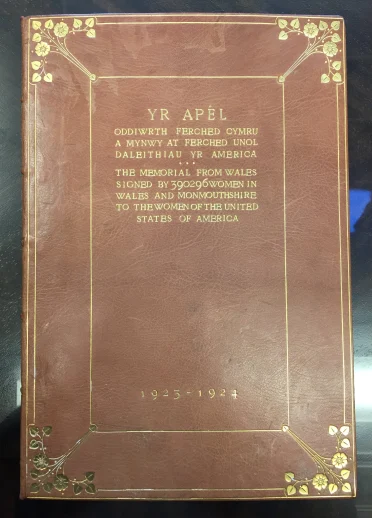
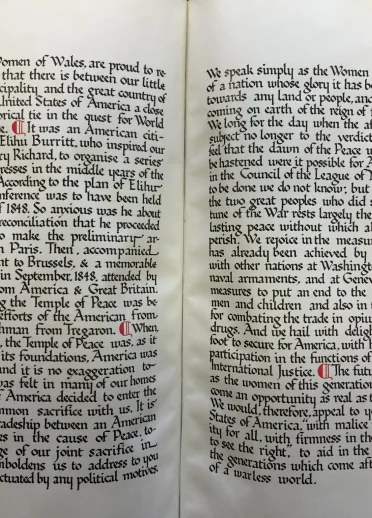
Americans in Wales
But it’s not just Welsh nationals who’ve found their way to America, many US citizens have also crossed the Atlantic to Wales – sometimes in extraordinary ways. Amelia Earhart did so most memorably in 1928, when she became the first woman to fly as part of a team across the Atlantic. Landing in Pwll near Burry Port, a stone near Burry Port’s quayside commemorates her journey.
American newspaper tycoon William Randolph Hearst also made a splash in 1925 when he decided he wanted to buy a Welsh castle. He successfully purchased St Donat’s Castle in Llantwit Major, restoring it (and altering it) in gregarious fashion. Lavish parties at the castle welcomed Frank Sinatra, Charlie Chaplin and a young John F. Kennedy. Later, it was sold to Atlantic College, who still use it today. You can see the castle in the header image of this article.
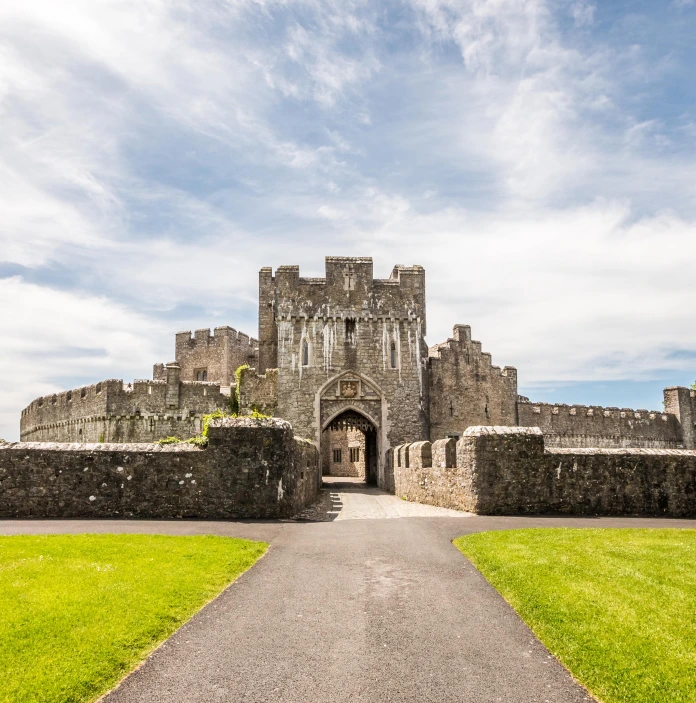
Thousands of American GIs also landed in Wales during the Second World War. Many arrived in the South Wales Valleys in flag-waving convoys, or alighted from trains as far afield as Tonypandy and Tenby. They folded into local communities, attended dances, and often married the locals; they also trained for the D-Day Landings on Horton Beach on the Gower Peninsula. General Dwight Eisenhower even visited troops in West Wales by train, and a rumour persists in Haverfordwest that world heavyweight boxing champion Rocky Marciano was stationed there.
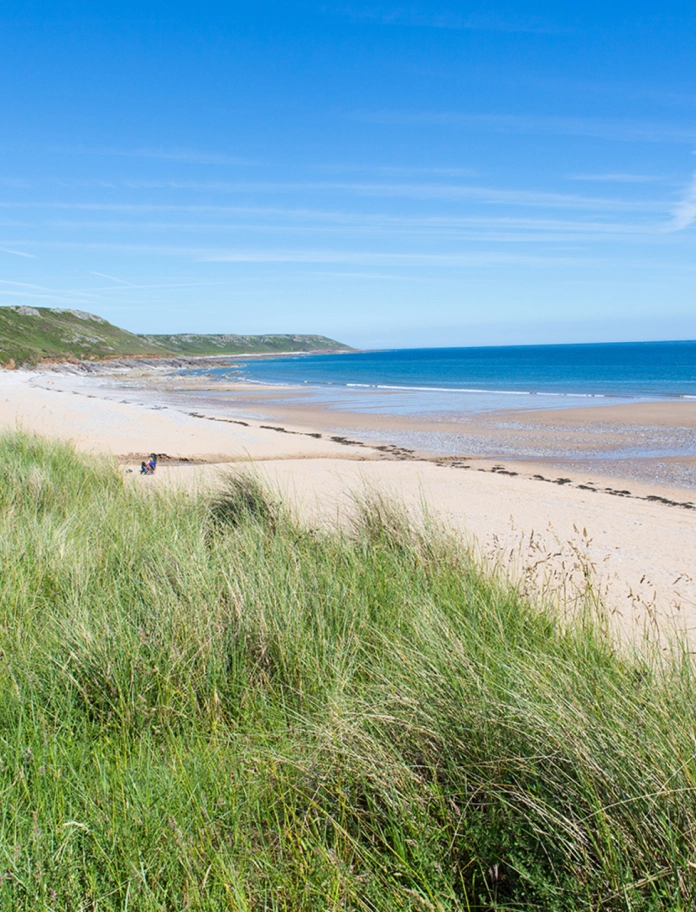
Welsh societies and celebrations
Not all of our connections to the USA are lifted from the history books, however. Today the USA is home to dozens of active Welsh diaspora social groups, with the oldest being The Welsh Society of Philadelphia, founded in 1798. Dedicated Welsh social clubs can also be found in the cities of Chicago, Washington DC and New York, with the latter hosting monthly socials at the city’s Welsh-owned bar, The Liberty.
There are also a handful of regular festivals celebrating Welsh culture, including Malad Valley Welsh Festival in Idaho and Rockmart Welshfest in Georgia.
It's always sunny in... Wrexham
One of our newest cross-Atlantic connections is undoubtedly one of our most unusual. In 2021, American actor and star of sitcom It’s Always Sunny in Philadelphia, Rob McElhenney – along with his (equally famous) Canadian-American colleague, Ryan Reynolds – purchased little-known Welsh football (soccer) club Wrexham AFC, which represents the Welsh city of Wrexham.
With the help of a globally streamed documentary (Welcome to Wrexham), which charted the unlikely takeover of the club, Wrexham AFC have now won legions of fans from across the USA and beyond – as well as promotion into the third division. The team's new owners endeavour to attend as many home matches as they can, and are regularly spotted in local pub, The Turf, sharing a beer with fans – a growing contingent of which travel over from the US!
Far back in time or near, Wales continues to inform American history, from ancient myths to modern stories. Long may we all discover more, over there, and over here.
Find out more:
- People's Collection Wales
- Working abroad - Welsh emigration (National Museum Wales)
- The Great Plains Welsh Heritage Project
- The links between Wales and America - a Welsh destination guide (Visit Wales)
Header image: St Donat's Castle in Llantwit Major, bought and restored by William Randolph Hearst, now the home of Atlantic College.
